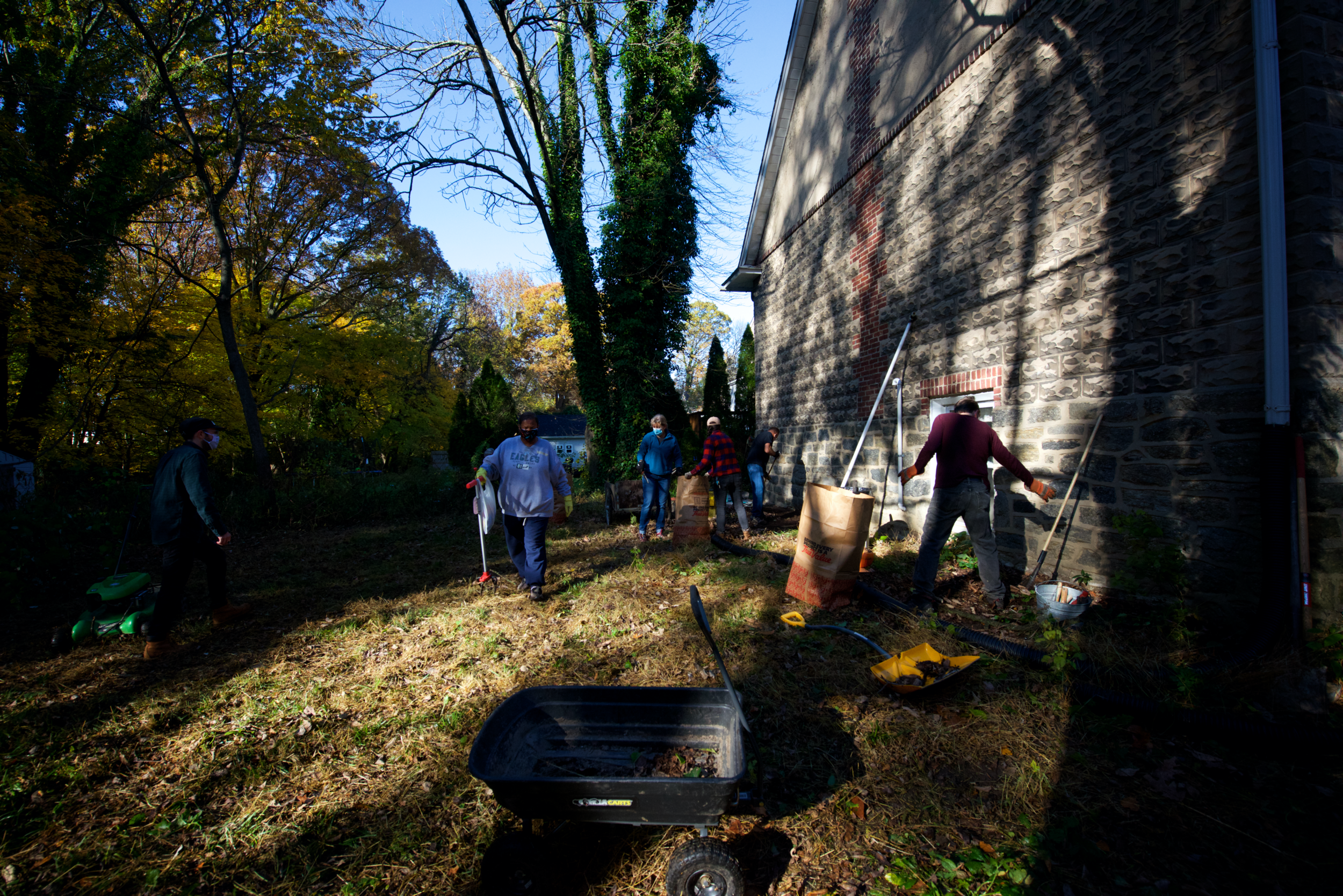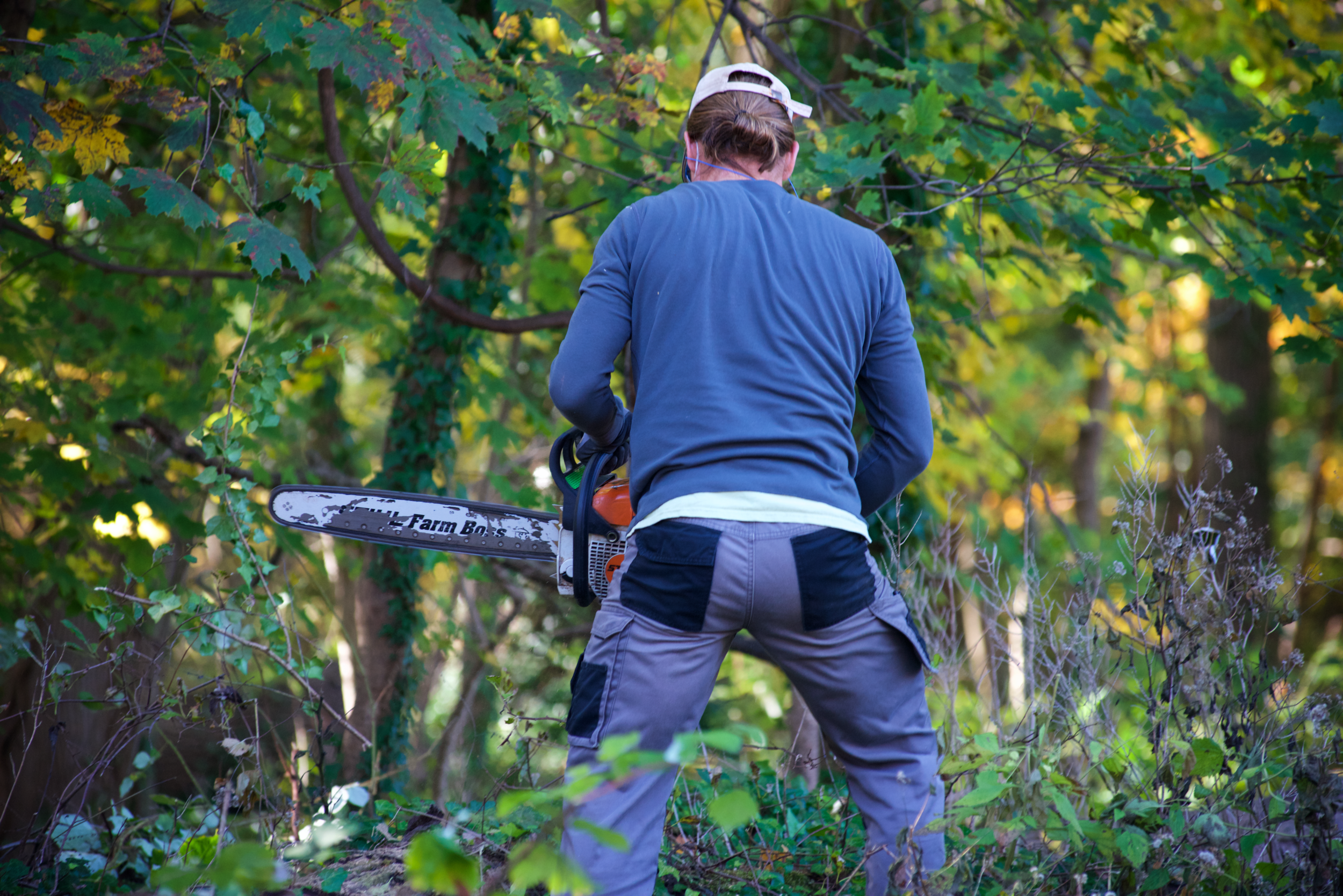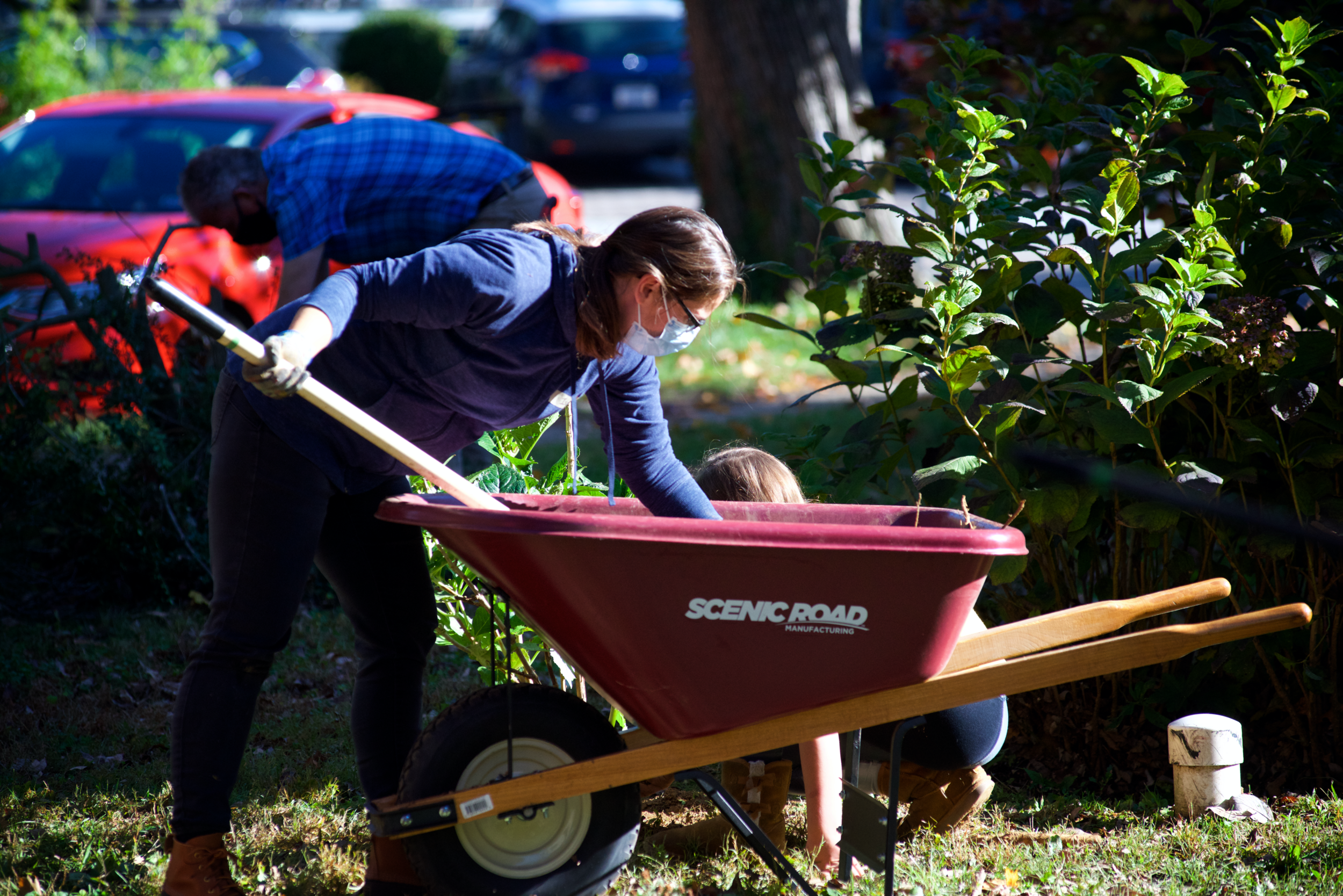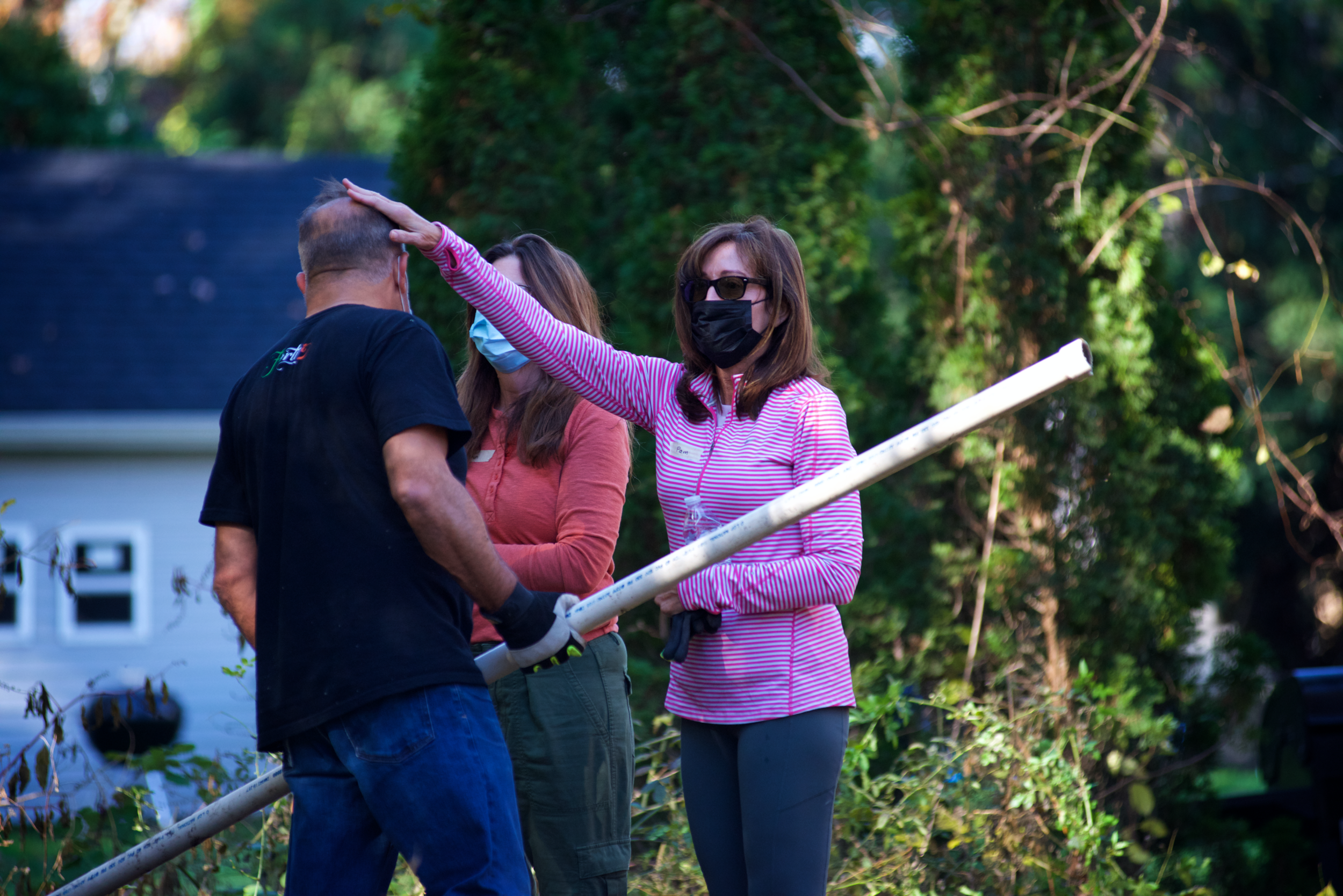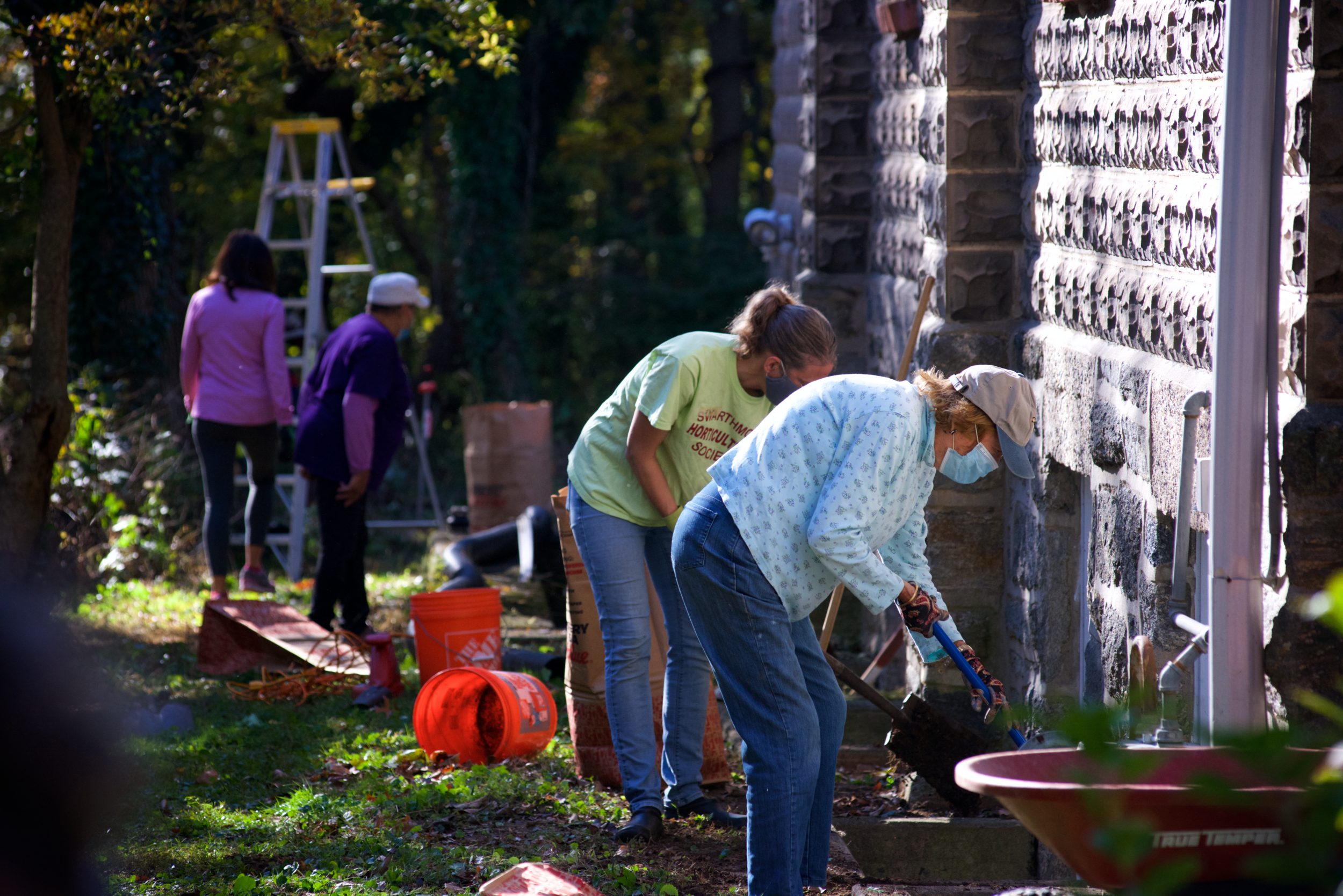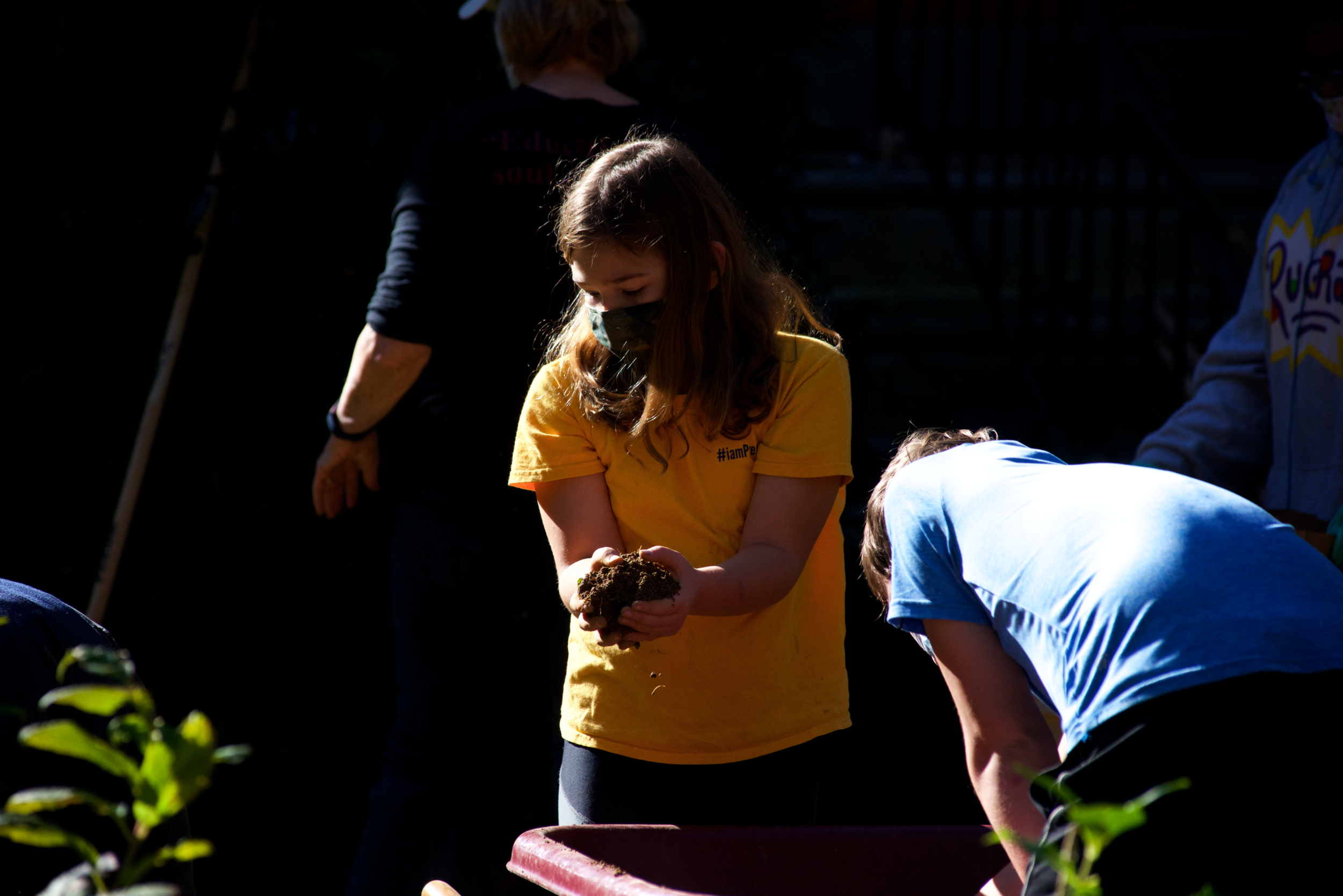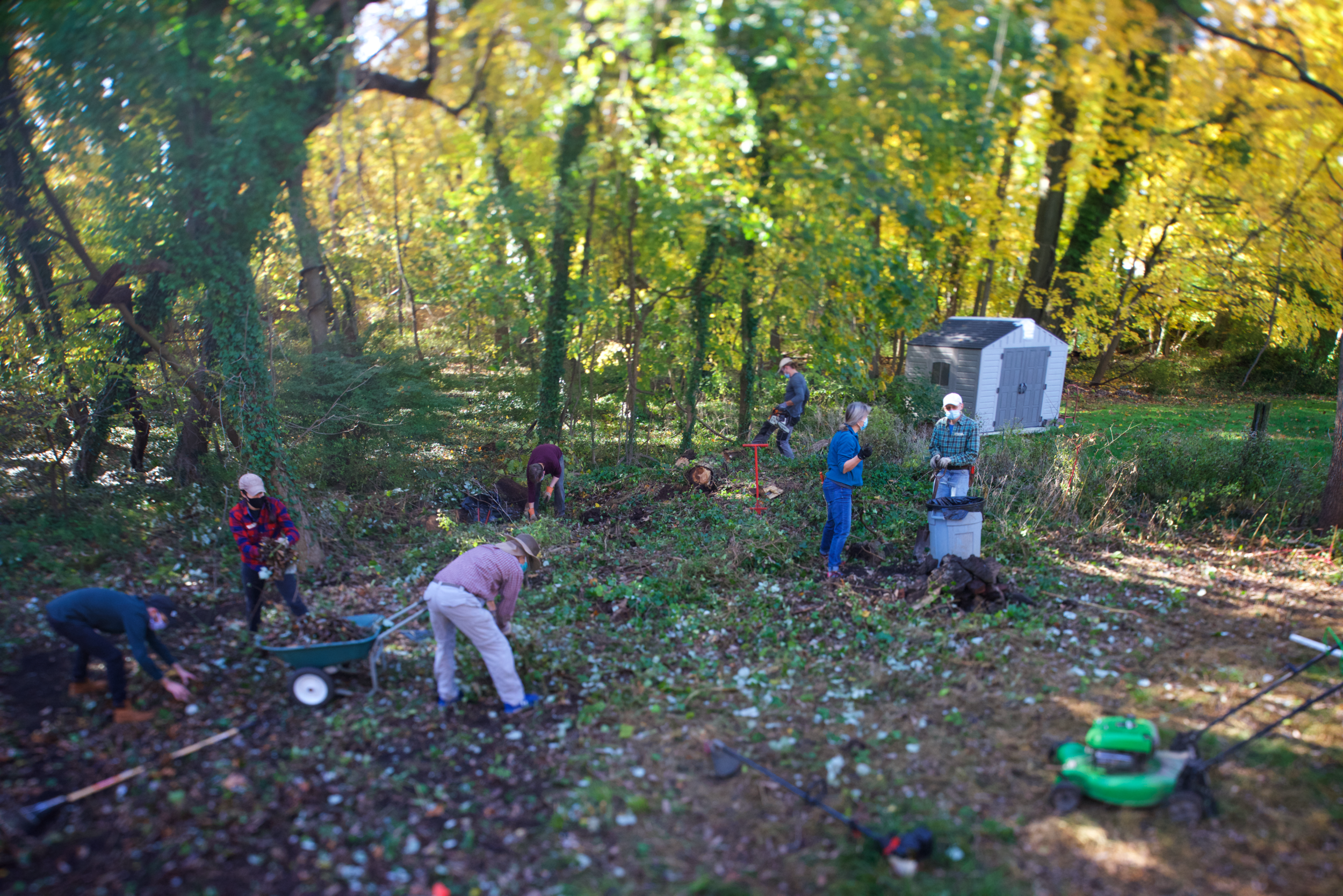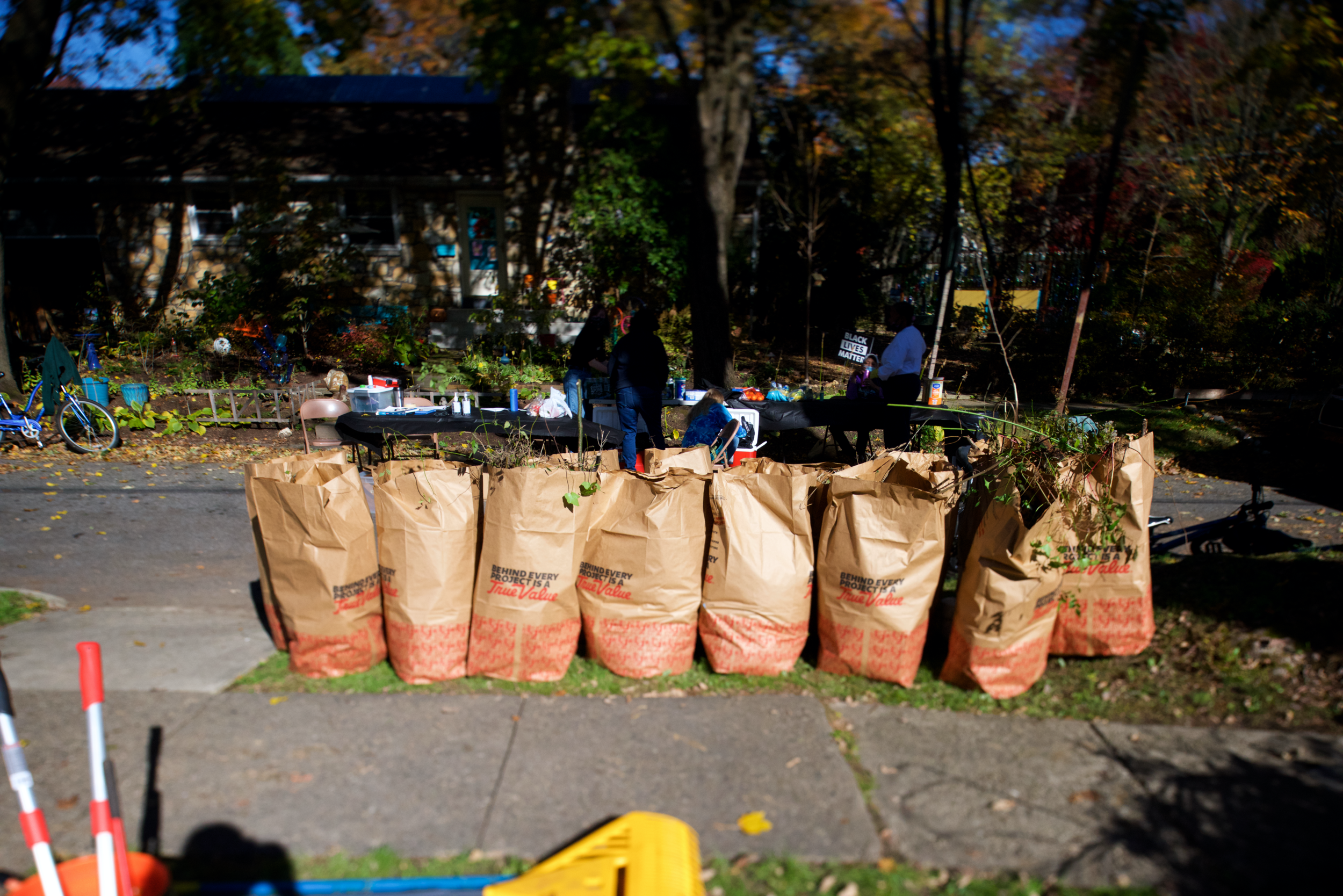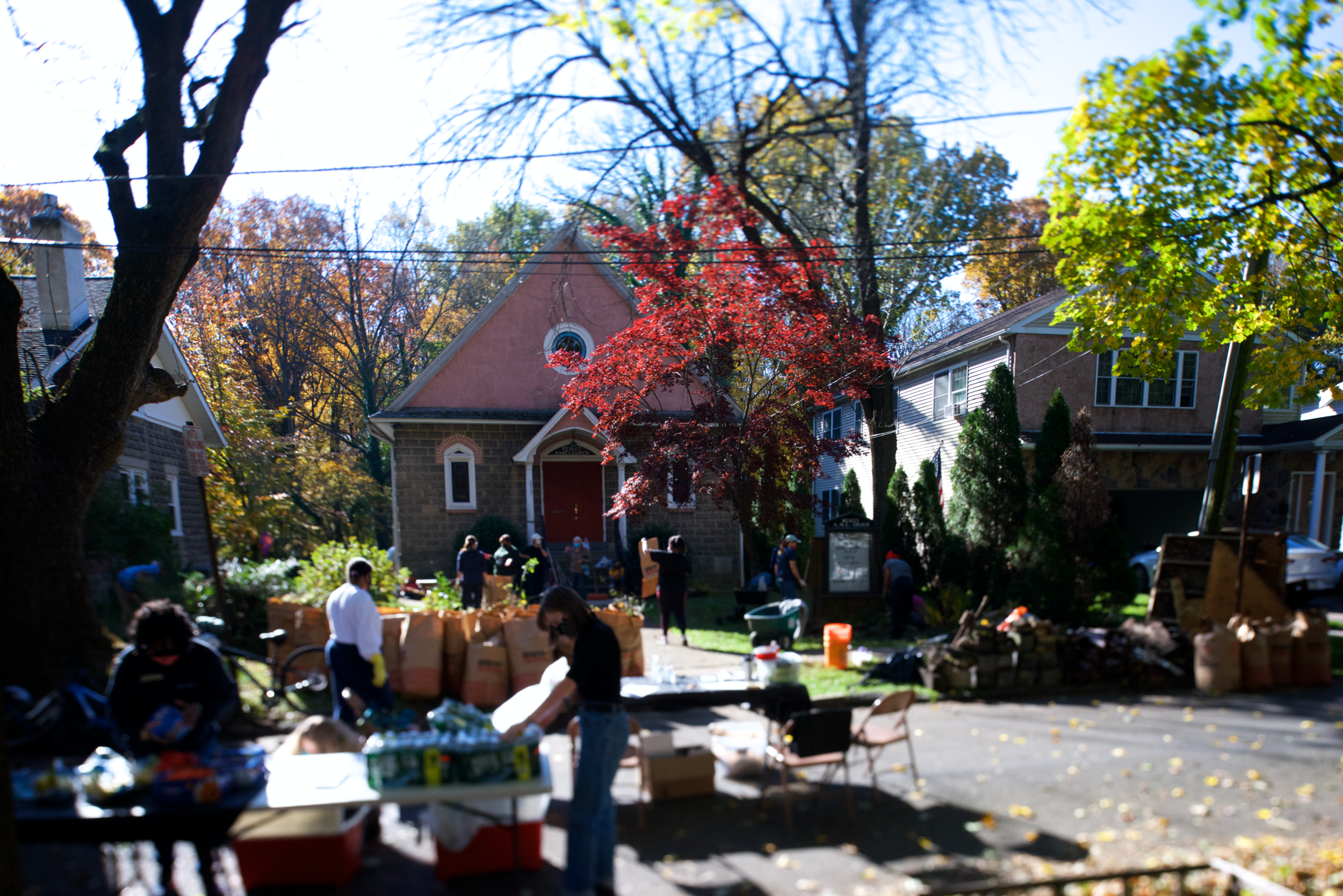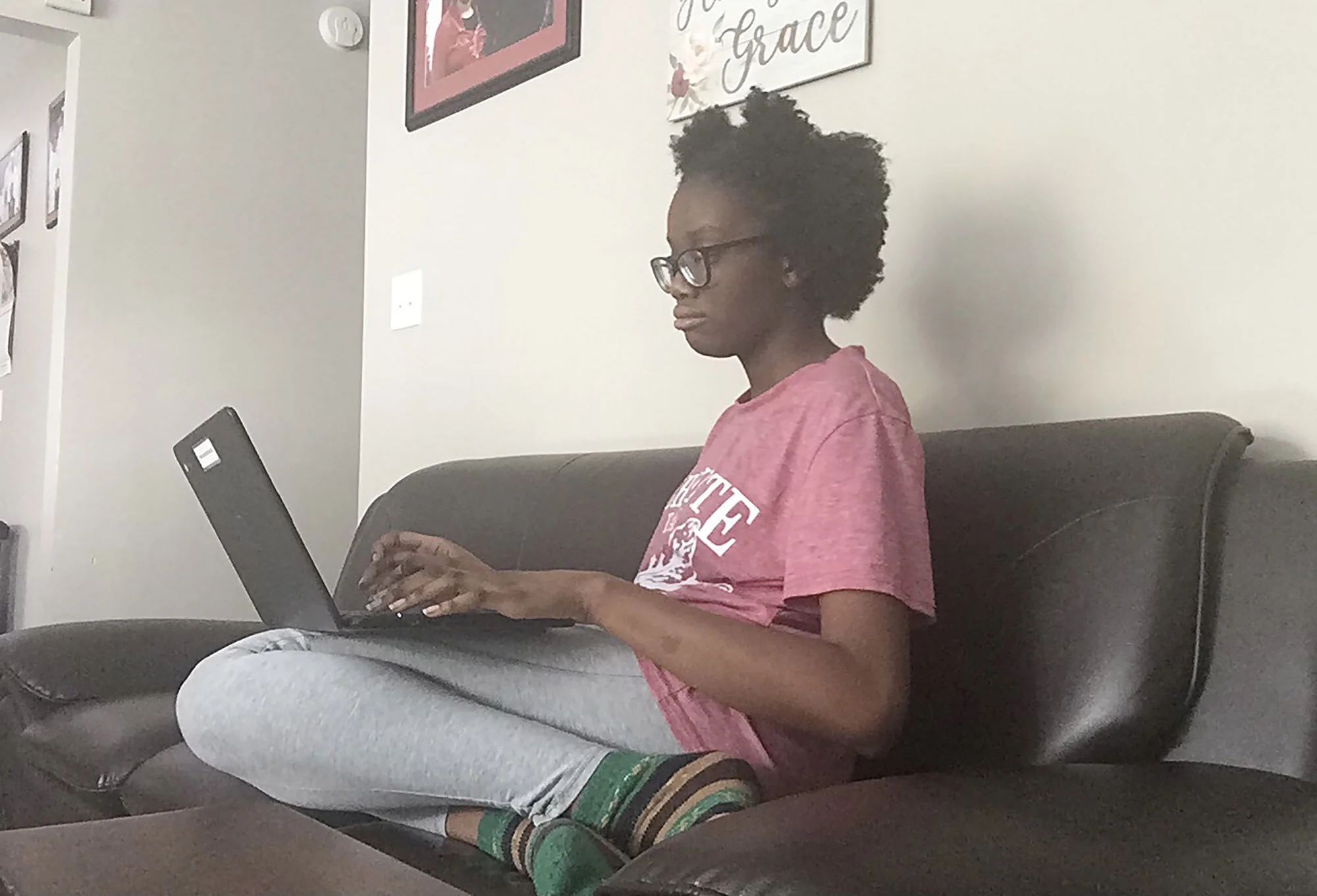A Beautiful Day in the Neighborhood for Wesley AME
On a crystal clear morning last Saturday, with the early sun casting a dramatic spotlight on the gold and red leaves of the autumn trees, a band of volunteers descended upon Wesley AME Church and immediately got to work disrupting the hushed stillness of Swarthmore’s Bowdoin Avenue.
Backed by the sound of a buzzing chainsaw, about 50 people, including a dozen children and teens, grabbed hacksaws, clippers, rakes, and shovels in their garden-gloved hands and began clearing the land around the century-old stone church.
It was all part of the Garden Community Work Party hosted jointly by Wesley AME Church members and the Swarthmore Horticultural Society, aimed at improving and beautifying the church grounds.
Wesley AME Church, situated in a modest A-framed stone building nestled amid its residential neighbors in the Historically Black Neighborhood of Swarthmore, will celebrate its 100th anniversary in 2021.
Last year, church leaders learned that the building’s foundation is crumbling due to drainage difficulties in the surrounding landscape. Plans to raise funds for the pricey repairs have been stymied by the onslaught of the COVID-19 pandemic, which has prevented fundraising events and ended weekly collections from congregants.
When horticultural society members Jennifer Pfluger and Jennifer Pennington learned of the church’s landscape troubles, they agreed it might fit perfectly with their organization’s recent strategic planning discussions about outreach beyond the 13 public gardens they oversee in downtown Swarthmore.
The women reached out to Kim Durnell, a Wesley AME Church leader, and Pastor Cathy Brownlee. Their response was excited and enthusiastic. The two groups collaborated on plans for a community work party, and the horticultural society arranged a plan of action. They organized work groups to attack problems on each side of the building, with particular attention on clearing weeds and leaves, as well as rerouting downspouts to improve drainage away from the building.
But most of the heavy-duty work was done in the church’s backyard, where a huge fallen tree, covered in brambles, vines, and waist-high weeds, had cut off access to half of the land. With sweat and dirt streaking their faces, a dozen men and women wielded loppers, a handsaw, and a chainsaw to clear the area. About 50 yard-waste bags filled with ripped up ivy vines and thorny twigs were carted out to the curb to be hauled off.
With the growth cleared, the workers found old metal pipes, rusted-out industrial pieces, and mounds of bricks and stones dumped in the far reaches of the yard. Wheeled to the curb, the junk formed piles weighing hundreds of pounds.
Afterwards, surveying the cleared space in the back that nearly doubles the church’s accessible land, Brownlee, the church’s new pastor, was thrilled.
“To listen to people talk about how they had Sunday School back here, and vacation Bible School...those are things we can now maybe do again,” she said. “It really makes us feel that this part of the community is appreciated. There is a reverence for the Historically Black Neighborhood of Swarthmore, and a reverence for the house of God.”
Ines Rodriguez, who lives across the street from the church, echoed Brownlee’s sentiments about the HBNS, saying its history is what drew her and her husband Michael Matotek to the neighborhood. Since the pandemic suspended services, “We miss the weekly hellos from the church folks. We miss their music and singing. We felt very strongly about helping them with this project,” she said.
In front of the building, garden beds were updated to provide more colorful blooms throughout the year, with a color scheme of liturgically significant purple, white, green, and yellow. Most of the early spring-blooming crocus and daffodils, summer daylilies and spiderwort, and fall toad lily and hosta were provided through donations.
The work party was a great start to what organizers hope will be a long and lasting relationship. “Today was amazing,” Durnell said. “I can see room for community space now and maybe a vegetable garden. It was a reflection of what America should be and what a community is.”
Her words held extra weight because, an hour earlier, almost like a coda to the event, older female church members staffing the snack table had suddenly let out cheers and hollers. The major news networks had declared Joe Biden the winner of the presidential election.
“I really was surprised about the amount of people who came out to help,” Brownlee said. “The heart of mankind was very much on display today.”
Photos by Andy Shelter
